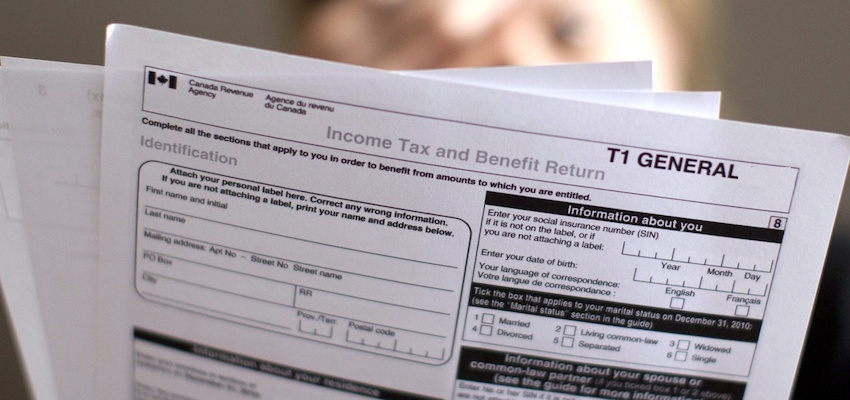We all have to pay taxes, but some of us pay more than others. While those who make more money typically pay higher taxes, your gross income is not the only factor that determines how much you fork over to the Canada Revenue Agency (or Revenue Quebec). Among other factors, your tax rate is also determined by the province you called home on December 31.
To illustrate the point, we created an interactive mapchart that compares take home income for a given taxable income in all 13 provinces and territories. Clicking a province will reveal detailed information about the given income and province.
The reason for the different tax rates are quite varied. British Columbia, New Brunswick and Alberta all recently experienced notable tax regime changes that can shed some light on what’s happening behind the scenes.
Both British Columbia’s top tax rate of 16.8 percent and New Brunswick’s 35.75 rate were dropped in 2016. Whereas British Columbia’s top rate was eliminated because the law that enacted it was a temporary measure that simply expired, New Brunswick’s top rate was scrapped in response to the federal government’s top rate increase of three percent — a consequence that is sure to follow in other provinces, economists warn.
Alberta has undergone incredible financial undulation recently, having just last summer replaced its long-serving Conservative government with an NDP one, while experiencing an unrelenting slump in oil prices. Due to this fossil fuel slump and its direct effect on the economy, Alberta will be receiving equalization payments again, kicking Ontario out of the sixth have-not province seat.
Historically, Alberta has had a flat 10 percent provincial tax rate, but since the NDP took office last year, that top-tier rate increased over 30 percent to 15 percent for the 2016 tax year. Combined, that’s a nine percent increase on income taxes for Albertans making over $300,000.
Liberals Change The Rules
The new Liberal government under Justin Trudeau made a few notable changes to the federal income tax regime in 2016, namely a highly publicized rate reduction to the middle class tax bracket (which ranges from $45,282 to $90,563). The tax rate was decreased from 22 percent to 20.5 percent.
Despite Liberal campaign promises to supply the middle class with tax relief “worth up to $670 per year“, the new tax regime is middle class in name only. For this notoriously difficult to define majority, the tax burden has not changed all that much across provinces or tax years.
To give the Liberal’s middle class tax relief a little perspective, for an Ontarian to save $670 on their income taxes in 2016, they would have to gross over $80,000. That’s a far cry from the widely recognized $55,000 per annum median income. A single, middle class earner making $40,000 per year in Ontario will only see a combined tax saving of $30.
The real beneficiaries of the new Liberal tax regime are Canada’s upper middle class (who many Canadians consider rich — making up to $200,000 per year). This class takes full advantage of the newly reduced middle tax bracket, while benefiting from a stagnated upper middle bracket, effectively reducing their tax burden the most. For instance, a resident of British Columbia earning $180,000 per year will pay $1,520 less in taxes in 2016.
In an attempt at tax symmetry, a four percent rate increase for Canadians earning north of $200,000 was applied to make up for the lost revenue related to the middle class tax cut — increasing Canada’s highest tax rate from 29 percent to 33 percent.
As a result of this rate increase for Canada’s one percent — the lucky few who earn more than $200,000 — many high-income earners are now being asked to pay over 50 percent — a psychological threshold economists warn encourages tax avoidance.
For instance, high income earning Albertans are now subject to a combined nine percent increase on income taxes — a rate increase that took less than a year to pass through the provincial legislature. This means an Albertan earning $250,000 per year will owe over $4,000 more in taxes than they did in 2015. These changes are rumoured to have caused at least one high profile Albertan to leave the province and country altogether.
If you want to see how your taxes will be impacted in 2016 and how that effect would have differed had you lived in a different province, you can adjust the interactive chart below.
Methodology Notes
The tax brackets and rates used to create these charts are taken directly from the CRA’s personal tax brackets page for 2016 and from the individual province’s 428s for 2015. Surtaxes for Ontario and Prince Edward Island are included in the calculations. Non-refundable income tax credits, including low income tax reduction, are not included in any of the calculations, except for basic personal amounts and Quebec residents’ federal income tax abatement, which represents a 16.5 percent reduction in federal income taxes for both 2015 and 2016.
Don’t miss our newest stories! Follow The 10 and 3 on Facebook or Twitter for the latest news and analysis.
